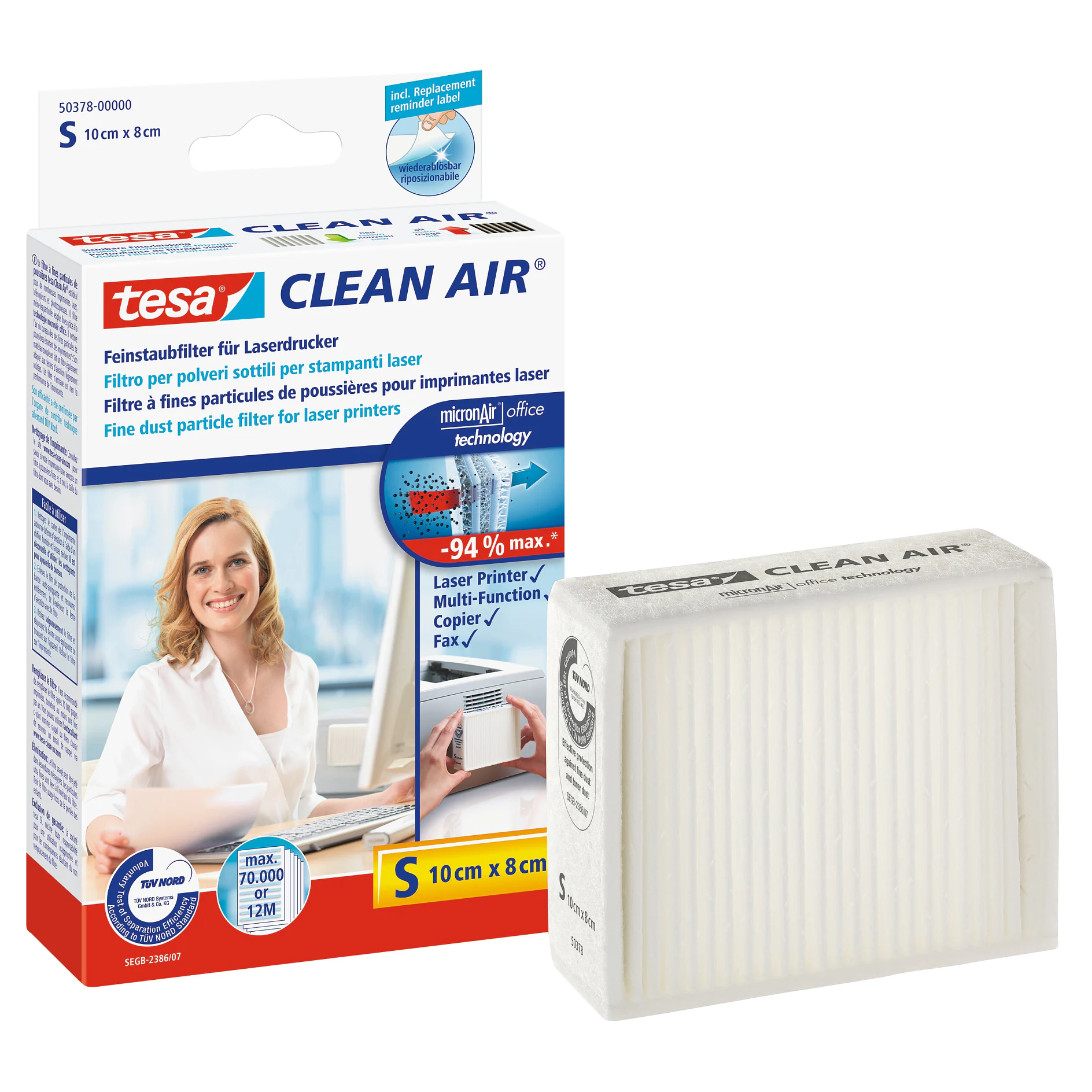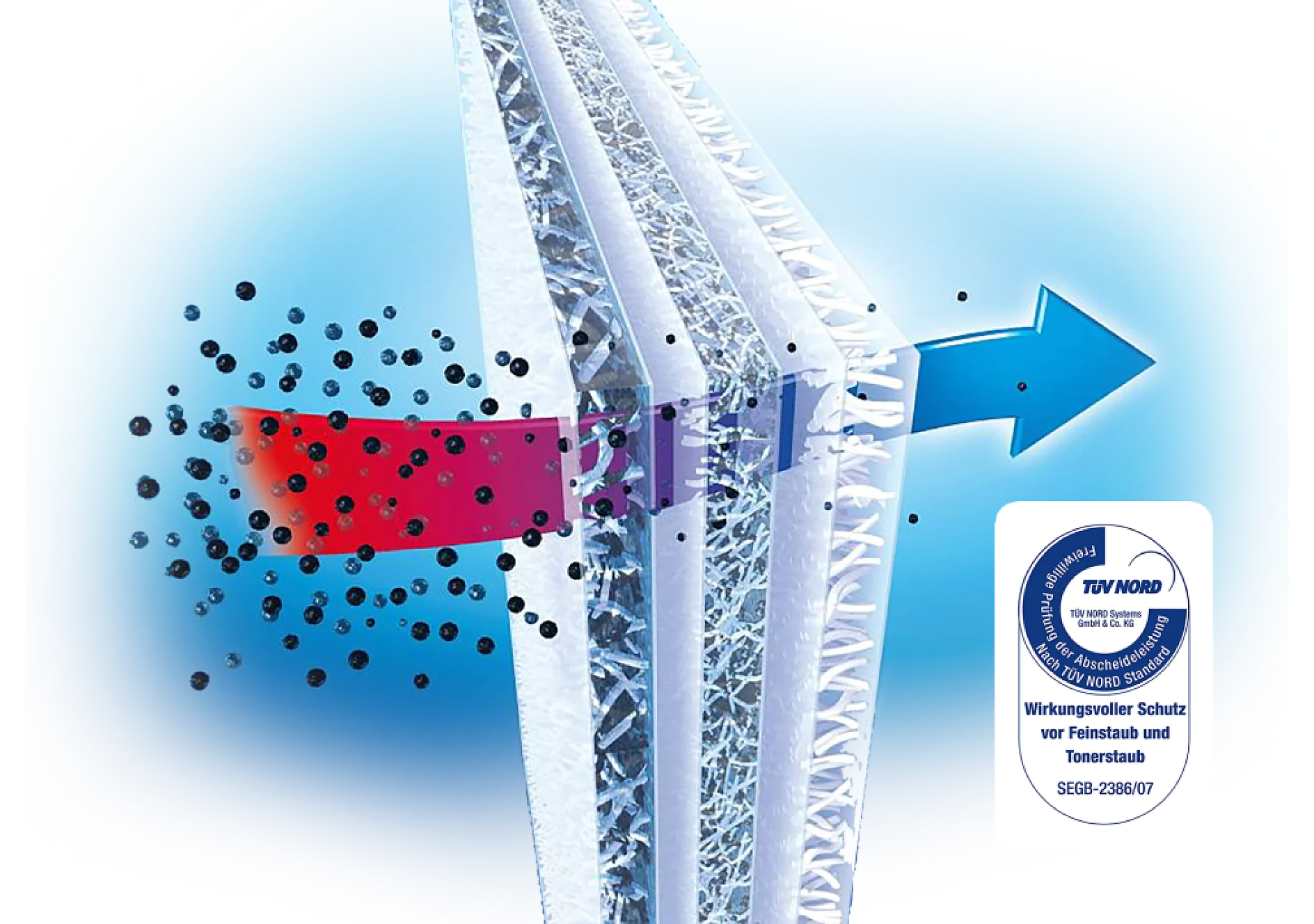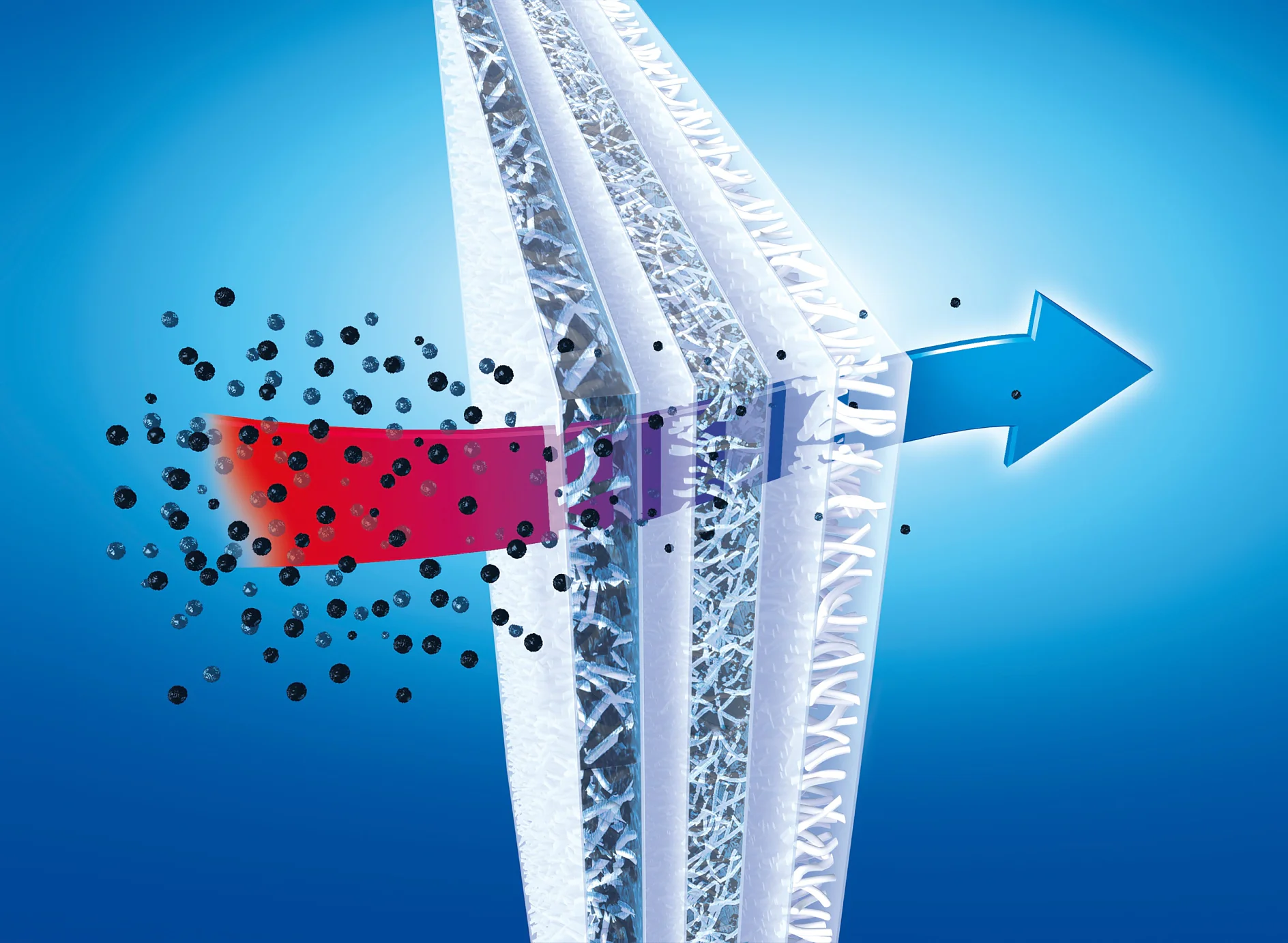Fine dust is an air pollutant and poses a risk to health - and the Earth's climate. The fine dust particles can enter the human body through respiration and cause a wide range of negative reactions.
Depending on the size of the particles, high exposure to fine dust favours the development of asthma, allergies, cardiovascular diseases and even cancer. Smaller dust particles, e.g. from laser printers, settle much more easily in the body.
The biggest sources of fine dust outdoors are combustion engines, coal-fired power plants, industrial plants, brake and tyre abrasion from vehicles, and agriculture.
Indoors, laser printers are among the most important sources of fine dust, along with toasters, candles and gas cookers. In offices, the widely used laser printers are therefore a potential risk. Many workers stay close to them throughout working hours and thus unknowingly expose themselves to health hazards.
Fine dust filters for laser printers significantly reduce the contamination of office air. Furthermore, if the office rooms are ventilated regularly, the air quality is improved even further.




